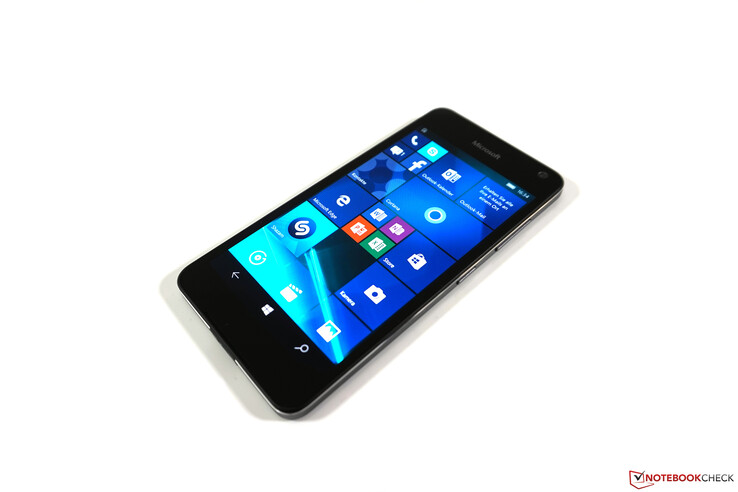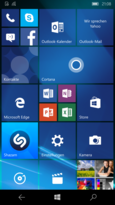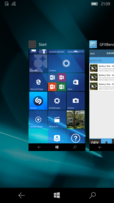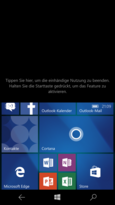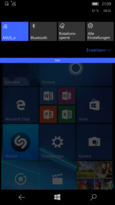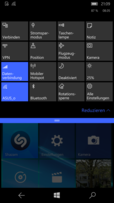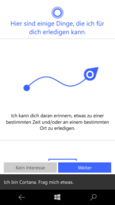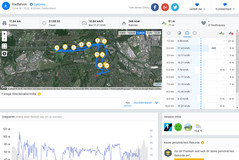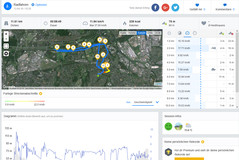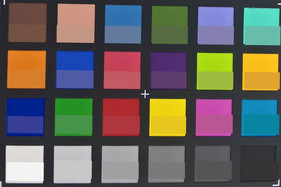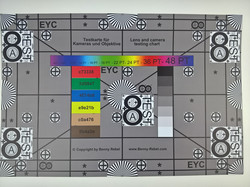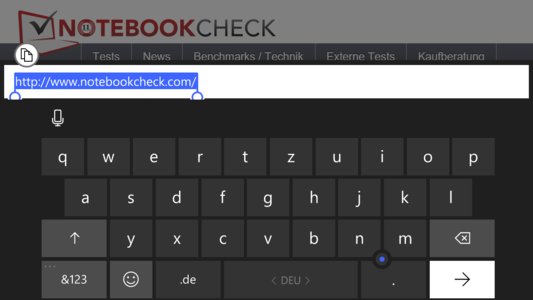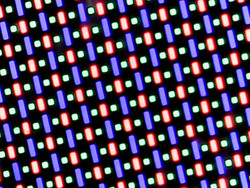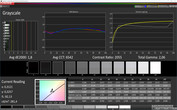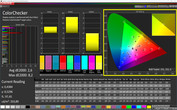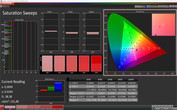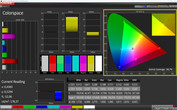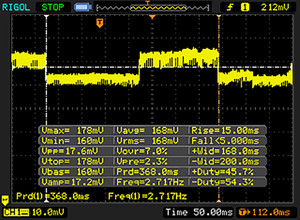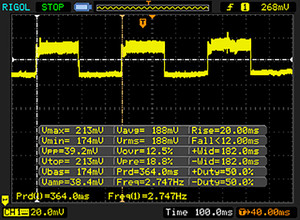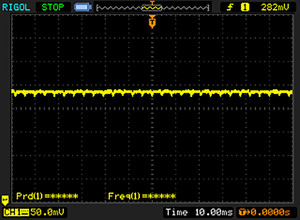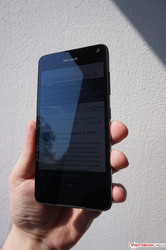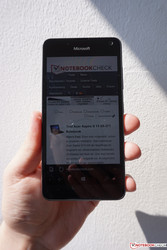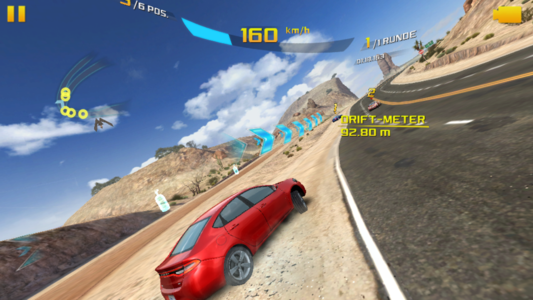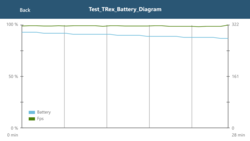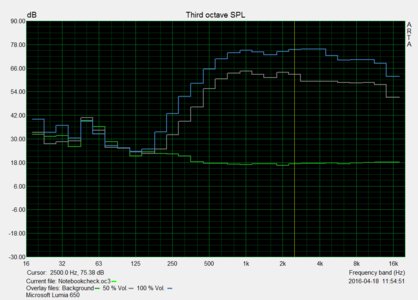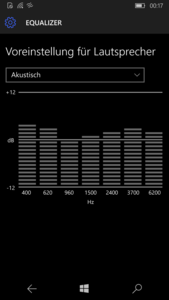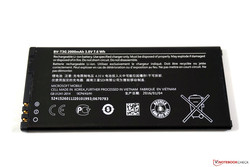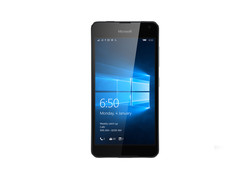Microsoft Lumia 650 Smartphone Review
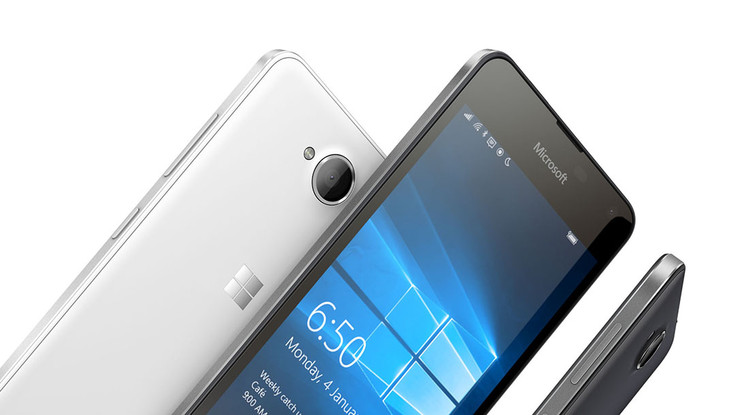
For the original German review, see here.
The Microsoft Lumia 650 is the direct successor to the Lumia 640 we reviewed one year ago. Microsoft once again offers two versions of the smartphone. We reviewed the "normal" version priced at around 200 Euros (~$226). Microsoft offers a dual-SIM model for 30 Euros (~$33) more, but there are no technical differences except for the additional SIM-slot. Microsoft advertises the suitability for businesses. The manufacturer from Redmond mainly refers to the Office apps as well as the compatibility with Windows 10 PCs, but customers do not get Continuum due to the slow hardware. This feature is currently reserved for the two flagship devices Lumia 950 and Lumia 950 XL. Our test device is equipped with an entry-level quad-core SoC from Qualcomm, 1 GB memory as well as 16 GB internal storage. The 5-inch display is based on AMOLED technology and has 1280x720 pixels (HD resolution).
Rivals for the Microsoft Lumia 650 include: Motorola Moto G3, Asus ZenFone 2 Laser, Archos Diamond S, Samsung Galaxy J5, Allview E4 and the LG Class.
Case
Microsoft drops the colorful design of the predecessor Lumia 640 and uses the design language from the current top models Lumia 950 and 950 XL for the new Lumia 650. The visual appearance of the smaller Lumia is even a bit nobler, because we get polished edges at the aluminum frame. The back cover is now made of black plastic and is slightly rounded towards the sides, which improves the handling. The black review unit integrates well into business environments and should not be very conspicuous. There is also a completely white version if you like a brighter smartphone.
The stability of the 5-inch smartphone is good in general, only the detachable cover at the back slightly affects the good impression. The cover itself sits tight, but between the surface and the battery underneath is a small gap, so you can hear slight clattering noises when you touch the cover. The cover also feels very cheap, but fingerprints, pressure or twisting attempts are no problem in return. We were able to hear some creaking, but this is caused by the detachable rear cover. Underneath, we can find the replaceable battery as well as the two slots for the microSD and SIM. Access to these two slots requires the removal of the battery.
Tipping the scale at just 122 grams and with a thickness of just 6.9 millimeters, the Lumia 650 is among the most compact devices within our comparison. There are no outliers for the other dimensions, either.
Connectivity
Microsoft equips the Lumia 650 with an entry-level quad-core SoC. Probably the most noticeable aspect of the Qualcomm Snapdragon 212 is the lack of a WWAN module, which has to be realized with an additional chip. Microsoft is not really generous in terms of connectivity, because we only get a common USB 2.0 port without OTG support as well as Bluetooth 4.1, Wi-Fi Direct and NFC. You can at least expand the 16 GB internal storage by up to 200 GB via microSD. Similar to the bigger Lumia models, there is no fingerprint scanner, but users of the Lumia 650 also have to waive an Iris scanner or a camera with facial recognition. This also means the function "Windows Hello" is not supported. Considering the focus on business customers, this is a bit disappointing. An FM radio is available, but it requires an optional headset.
Software
After the Lumia 950 XL, the Lumia 950 and the Lumia 550, the review unit Lumia 650 is the fourth smartphone with the operating system Windows 10 Mobile. You still get the tiles on the home screen, so both the design and the handling do not really differ from the previous Windows Phone 8.x. You will feel right at home when you have used a Windows smartphone before, but the handling is also pretty intuitive for newcomers. The home screen consists of tiles (some with live information), which can be adjusted in terms of size and transparency.
A swipe from the top opens the quick settings, which can be further expanded. The lower bar with the onscreen buttons (back, Windows, search) can be an issue in some situations. It can be activated and deactivated with a swipe from below. Basically a good idea, but the content is not always adjusted to the bar, so control elements from apps can be partially or even completely blocked.
Still, Windows 10 Mobile leaves a positive impression in general. We already mentioned the intuitive handling and Office is already preloaded. Probably the biggest issue of Windows Mobile is still the limited app selection compared to Android and iOS. This might not be such a big deal if this is your first smartphone, but you should definitely check the availability of your preferred apps when you switch from Android or iOS.
A useful feature is the always-on display (glance screen) we already know from the more expensive Lumias. You can see information like the date, time and notification on the lock screen. There are also numerous settings for this function. You can, for instance, adjust how long the information is shown or activate a night mode with other colors.
Communication & GPS
You can also notice the low price of the Lumia 650 when you look at the specs for the communication modules. There should not be any limitations in practice, but you have to waive modern standards. LTE connections are possible according to Cat. 4 (up to 150 Mbps downstream, 50 Mbps upstream), but the supported 2G and 3G frequencies in particular are limited (see specs for full list). This means the Lumia 650 is not the perfect choice for frequent travelers.
The smartphone supports the Wi-Fi standards 802.11 b/g/n, but only in 2.4 GHz networks. Neither the less crowded 5 GHz band nor the fast ac-standard is available. The Wi-Fi signal was average at best in our individual review environment. The signal often dropped to just one bar with just a few structural obstacles like thin walls, and the performance during web browsing and app downloads was noticeably affected as well.
The Lumia 650 is surprisingly well-equipped in terms of location, because besides A-GPS and GLONASS, the smartphone can also use the Chinese BeiDou network. We compare the performance of the smartphone with the professional navigation device Garmin Edge 500 on a bicycle ride. The review unit performs very well and the deviation is just 200 meters on the 11 km track. We cannot see shortcuts or connection issues on the summary, either. It is therefore no problem to use the Lumia 650 for navigation purposes.
Telephone & Voice Quality
The structure of the phone app is a bit complicated, because the individual functions are distributed across the top and the bottom. We can find different tabs with the history, quick dial and the numbers pad at the top, while the symbols at the bottom change depending on the active tab. Access to the mailbox or the contacts, for example, is only possible in the tabs history and quick dial, but not when you use the numbers pad. One advantage is the good integration of Skype, because calls are also listed in the normal phone app.
We would describe the voice quality itself as inconspicuous. Voices are clear and we did not notice annoying dropouts – contrary to the bigger Lumia 950 XL. The hands-free mode on the other hand creates slightly tinny voices and our call partner noted that our voice was a bit quiet.
Cameras
Microsoft implements a 5 MP wide-angle camera at the front (f/2.2, fix focus), which takes decent pictures in good lighting conditions. You can still see the content very well in low-light situations, even though picture noise cannot be avoided due to the missing flash. Videos can be recorded in the HD resolution (1280x720 pixels) with the front camera.
The rear camera has a slightly higher resolution of 9 MP (f/2.2) and is equipped with an autofocus as well as an LED flash. The quality of the pictures is surprisingly good and the low resolution is only noticeable when you zoom in. We can still see everything in low-light situations and the picture noise is not too bad. This means the Lumia 650 is definitely suited for occasional pictures. The maximum video resolution of the rear camera is limited to the HD resolution and up to 30 fps, so slow-motions are not possible.
The functionality of the camera software is a bit meager. You can adjust some values like ISO value or the exposure, but some picture modes are missing. For instance, it is not possible to take panoramas without additional apps. There are no filters, either.
In addition to our usual sample shots, we also take pictures under controlled lighting conditions. We use the automatic mode and the results are not edited afterwards. We use the ColorChecker colors to evaluate the color accuracy. Many of the colors are a bit too saturated, but this actually helps the vivid picture impression.
The test chart is a good indicator for the sharpness of the camera. The Lumia 650 – despite the comparatively low resolution – once again performs very well. We can only see slightly blurred edges in the enlarged section. All in all, a good performance for this price range.
Accessories & Warranty
The Microsoft Lumia 650 is only shipped with the essentials. The power adapter has a fixed cable, so we do not get a USB cable for connection with a PC. A headset is not in the box, either, but Microsoft offers an optional Comfort Headset as well as an external battery.
The warranty period for the smartphone is two years.
Input Devices & Handling
Despite the comparatively slow hardware, the handling of the smartphone is actually pretty smooth. This is also supported by the good touchscreen, which allows precise inputs. The gliding capabilities of the surface (Gorilla Glass 3) are also without criticism. We are not quite that convinced by the physical buttons on the right side of the case. The volume rocker and the power button are a little bit on the stiff side and have a spongy pressure point, and the power button is not perfectly implemented and clatters a bit.
The virtual keyboard of the Lumia 650 is called Word Flow and also accepts fast inputs without problems. All common features (word predictions, spelling, swipe inputs) are supported and we get a small blue dot to move the cursor within inputs.
Display
Similar to the more expensive Lumia smartphones, Microsoft also uses an AMOLED screen for the smaller Lumia 650. The 5-inch display has the HD resolution (1280x720 pixels), which results in a pixel density of 294 PPI. Fonts and pictures are therefore sufficiently sharp. Subjectively, we like the rich colors, which are typical for AMOLEDs. There are settings for the color temperature and the saturation, which can be adjusted within certain limits, so you can adjust the display to your personal preferences.
We measure the brightness with a pure white picture (up to 372 cd/m²) as well as an even distribution of bright and dark surfaces (APL50, up to 398 cd/m²). Some LCD-based rivals manage slightly higher results, but because of the low black value (0 cd/m²) and the resulting high contrast ratio, this small disadvantage is easily compensated for. The luminance is not further increased with the activated light sensor.
| |||||||||||||||||||||||||
Brightness Distribution: 92 %
Center on Battery: 349 cd/m²
Contrast: ∞:1 (Black: 0 cd/m²)
ΔE Color 2.6 | 0.5-29.43 Ø5
ΔE Greyscale 1.8 | 0.57-98 Ø5.3
Gamma: 2.06
| Microsoft Lumia 650 Adreno 304, 212 APQ8009, 16 GB eMMC Flash | Motorola Moto G 3. Gen 2015 XT1541 Adreno 306, 410 MSM8916, 8 GB eMMC Flash | Asus Zenfone 2 ZE500KL Adreno 306, 410 APQ8016, 16 GB eMMC Flash | Archos Diamond S Mali-T720 MP4, MT6753, 16 GB eMMC Flash | Samsung Galaxy J5 Adreno 306, 410 MSM8916, 8 GB eMMC Flash | Allview E4 Mali-T720 MP4, MT6753, 16 GB eMMC Flash | LG Class Adreno 306, 410 APQ8016, 16 GB eMMC Flash | |
|---|---|---|---|---|---|---|---|
| Screen | -25% | 7% | -46% | -44% | -28% | -59% | |
| Brightness middle | 349 | 418 20% | 467 34% | 357 2% | 349 0% | 534 53% | 518 48% |
| Brightness | 353 | 407 15% | 460 30% | 363 3% | 353 0% | 503 42% | 492 39% |
| Brightness Distribution | 92 | 95 3% | 95 3% | 95 3% | 93 1% | 82 -11% | 91 -1% |
| Black Level * | 0.49 | 0.3 | 0.57 | 0.51 | |||
| Colorchecker dE 2000 * | 2.6 | 3.92 -51% | 3.28 -26% | 6.11 -135% | 5.22 -101% | 5.65 -117% | 5.41 -108% |
| Colorchecker dE 2000 max. * | 8.2 | 9.91 -21% | 8.76 -7% | ||||
| Greyscale dE 2000 * | 1.8 | 3.81 -112% | 1.89 -5% | 4.12 -129% | 3.96 -120% | 3.69 -105% | 7.67 -326% |
| Gamma | 2.06 107% | 2.27 97% | 2.21 100% | 2.24 98% | 2.08 106% | 2.15 102% | 2.19 100% |
| CCT | 6542 99% | 7361 88% | 6734 97% | 7272 89% | 7308 89% | 7289 89% | 8521 76% |
| Contrast | 853 | 1557 | 937 | 1016 |
* ... smaller is better
The smartphone from Microsoft performs very well in our CalMAN measurements. We can only measure low average DeltaE-2000 deviations ex-works. Both the grayscale as well as the colors are below the target value of 3 at 1.8 and 2.6, respectively, even though there are some outliers (red, magenta) with a deviation of up to eight.
Display Response Times
| ↔ Response Time Black to White | ||
|---|---|---|
| 20 ms ... rise ↗ and fall ↘ combined | ↗ 15 ms rise | |
| ↘ 5 ms fall | ||
| The screen shows good response rates in our tests, but may be too slow for competitive gamers. In comparison, all tested devices range from 0.1 (minimum) to 240 (maximum) ms. » 37 % of all devices are better. This means that the measured response time is similar to the average of all tested devices (21.5 ms). | ||
| ↔ Response Time 50% Grey to 80% Grey | ||
| 32 ms ... rise ↗ and fall ↘ combined | ↗ 20 ms rise | |
| ↘ 12 ms fall | ||
| The screen shows slow response rates in our tests and will be unsatisfactory for gamers. In comparison, all tested devices range from 0.2 (minimum) to 636 (maximum) ms. » 36 % of all devices are better. This means that the measured response time is similar to the average of all tested devices (33.7 ms). | ||
Screen Flickering / PWM (Pulse-Width Modulation)
| Screen flickering / PWM not detected | |||
In comparison: 53 % of all tested devices do not use PWM to dim the display. If PWM was detected, an average of 17915 (minimum: 5 - maximum: 3846000) Hz was measured. | |||
We also want to mention the brightness control of the Lumia 650 at this point. AMOLEDs are typically controlled by so called pulse-width modulation (explanation in the box above) to dim the brightness. In the case of the Lumia 650, however, we could not detect PWM. This is good news for users that usually have issues with AMOLEDs.
We already mentioned that the maximum luminance is not further increased with the activated light sensor. Microsoft does, however, implement a feature called "sunlight readability enhancements". Special algorithms are supposed to improve the visibility under sunlight. We cannot really see a difference though, and similar to all other glossy displays, you should avoid direct light sources if possible. Otherwise, the display fares pretty well and there are no limitations even in bright environments. The viewing-angle stability is very good, but you can see a slight blue discoloration from very extreme angles, which is common for AMOLEDs. This was, however, no problem for us in practice.
Performance
Except for the high-end devices, many smartphones with the Windows operating system are equipped with comparatively slow hardware. This is also the case for the current Lumia. The Snapdragon 212 from Qualcomm was only announced at the beginning of this year, but it is still an entry-level chip with its four Cortex-A7 cores (up to 1.3 GHz). The other specs with just 1 GB RAM and the GPU Adreno 304 cannot be called high-end, either.
Windows 10 Mobile still runs very smoothly on the review unit, but this is only the case if you are moving on the user interface. There will be stutters and delays as soon as you launch or exit apps and browse more complex websites. This is also the case when you switch between apps; one example is the switch from the camera to the gallery. The benchmarks results are – as expected – pretty bad and the Lumia 650 is usually in the last spot within our comparison group. The benchmark Basemark X 1.1 did not run on the device.
| GFXBench (DX / GLBenchmark) 2.7 | |
| T-Rex Onscreen (sort by value) | |
| Microsoft Lumia 650 | |
| Motorola Moto G 3. Gen 2015 XT1541 | |
| Asus Zenfone 2 ZE500KL | |
| Archos Diamond S | |
| Allview E4 | |
| LG Class | |
| 1920x1080 T-Rex Offscreen (sort by value) | |
| Microsoft Lumia 650 | |
| Motorola Moto G 3. Gen 2015 XT1541 | |
| Asus Zenfone 2 ZE500KL | |
| Archos Diamond S | |
| Allview E4 | |
| LG Class | |
| Linpack Android / IOS | |
| Multi Thread (sort by value) | |
| Microsoft Lumia 650 | |
| Motorola Moto G 3. Gen 2015 XT1541 | |
| Samsung Galaxy J5 | |
| Allview E4 | |
| Single Thread (sort by value) | |
| Microsoft Lumia 650 | |
| Motorola Moto G 3. Gen 2015 XT1541 | |
| Samsung Galaxy J5 | |
| Allview E4 | |
| AnTuTu v6 - Total Score (sort by value) | |
| Microsoft Lumia 650 | |
| Archos Diamond S | |
| Allview E4 | |
| Octane V2 - Total Score (sort by value) | |
| Microsoft Lumia 650 | |
| Motorola Moto G 3. Gen 2015 XT1541 | |
| Asus Zenfone 2 ZE500KL | |
| Archos Diamond S | |
| Samsung Galaxy J5 | |
| Allview E4 | |
| LG Class | |
| Mozilla Kraken 1.1 - Total (sort by value) | |
| Microsoft Lumia 650 | |
| Motorola Moto G 3. Gen 2015 XT1541 | |
| Asus Zenfone 2 ZE500KL | |
| Archos Diamond S | |
| Samsung Galaxy J5 | |
| Allview E4 | |
| LG Class | |
| WebXPRT 2015 - Overall (sort by value) | |
| Microsoft Lumia 650 | |
| Motorola Moto G 3. Gen 2015 XT1541 | |
| Samsung Galaxy J5 | |
| Allview E4 | |
| LG Class | |
* ... smaller is better
Gaming
You can obviously notice the slow components during gaming. The Lumia 650 does benefit from its slightly lower HD resolution, but there will still be stutters in many games. Asphalt 8: Airborne is one example where we noticed the stutters even with low effects. It is playable but not completely smooth. Simpler titles like Doodle Jump are no problem. The mono speaker at the front directs the sound towards the user and is not covered during gaming. The sensors worked well during our tests.
Emissions
Temperature
The temperature development of the Microsoft Lumia 650 is completely uncritical. It does not even get lukewarm while idling or with light workloads, and we can also only measure up to 38 °C under load at some spots. The SoC does not have thermal issues, either. We check the performance under sustained load with the GFXBench Battery Test. It repeats the T-Rex test 30 times and logs the performance. The result is clear, because the FPS number does not fluctuate.
(+) The maximum temperature on the upper side is 37.2 °C / 99 F, compared to the average of 35 °C / 95 F, ranging from 21.9 to 56 °C for the class Smartphone.
(+) The bottom heats up to a maximum of 38.2 °C / 101 F, compared to the average of 33.8 °C / 93 F
(+) In idle usage, the average temperature for the upper side is 30 °C / 86 F, compared to the device average of 32.7 °C / 91 F.
| Microsoft Lumia 650 Adreno 304, 212 APQ8009, 16 GB eMMC Flash | Motorola Moto G 3. Gen 2015 XT1541 Adreno 306, 410 MSM8916, 8 GB eMMC Flash | Asus Zenfone 2 ZE500KL Adreno 306, 410 APQ8016, 16 GB eMMC Flash | Archos Diamond S Mali-T720 MP4, MT6753, 16 GB eMMC Flash | Samsung Galaxy J5 Adreno 306, 410 MSM8916, 8 GB eMMC Flash | Allview E4 Mali-T720 MP4, MT6753, 16 GB eMMC Flash | LG Class Adreno 306, 410 APQ8016, 16 GB eMMC Flash | |
|---|---|---|---|---|---|---|---|
| Heat | -6% | 1% | 4% | -2% | -16% | -1% | |
| Maximum Upper Side * | 37.2 | 41.2 -11% | 41.1 -10% | 34.3 8% | 38.3 -3% | 41.3 -11% | 38.6 -4% |
| Maximum Bottom * | 38.2 | 39.2 -3% | 37 3% | 33.7 12% | 37.7 1% | 45.1 -18% | 35 8% |
| Idle Upper Side * | 30.9 | 33.4 -8% | 30 3% | 32 -4% | 31.9 -3% | 36 -17% | 34.2 -11% |
| Idle Bottom * | 30.5 | 31.1 -2% | 27.9 9% | 31 -2% | 30.8 -1% | 35.3 -16% | 29.6 3% |
* ... smaller is better
Speakers
The mono speaker is at the bottom of the front and directs the sound towards the user. The maximum volume is sufficiently loud at almost 86 dB(A), but the sound is still pretty tinny. Bass is not available at all and the integrated equalizer with different presets (somewhat hidden in Settings/Extras/Equalizer) cannot change that, either. External speakers or headphones can either be attached via Bluetooth, NFC or stereo jack.
Energy Management
Power Consumption
Our consumption measurements show decent results for the Lumia 650. We can only notice the "old" and less efficient Cortex-A7 cores of the SoC under load, because our review unit consumes more power than many of the comparisons devices on average in particular. The maximum consumption is about 4.5 Watts, but the power adapter only has a nominal output of 2.75 Watts (5V, 550 mA). This means the PSU cannot charge the battery or at least maintain the capacity when you play games, for example.
The standby consumption is 0.22 Watts and is increased to 0.36 with the always-on display (information on the lock screen).
| Off / Standby | |
| Idle | |
| Load |
|
| Microsoft Lumia 650 7.6 Wh | Motorola Moto G 3. Gen 2015 XT1541 Wh | Asus Zenfone 2 ZE500KL Wh | Archos Diamond S Wh | Samsung Galaxy J5 10 Wh | Allview E4 8 Wh | LG Class Wh | |
|---|---|---|---|---|---|---|---|
| Power Consumption | 11% | 18% | -10% | -64% | -193% | -49% | |
| Idle Minimum * | 0.7 | 0.4 43% | 0.5 29% | 0.8 -14% | 1.5 -114% | 3.11 -344% | 1.2 -71% |
| Idle Average * | 1.1 | 1 9% | 0.9 18% | 1.21 -10% | 2.2 -100% | 4.06 -269% | 1.9 -73% |
| Idle Maximum * | 1.18 | 1.2 -2% | 1.1 7% | 1.32 -12% | 2.4 -103% | 4.23 -258% | 2.2 -86% |
| Load Average * | 4.04 | 2.9 28% | 2.4 41% | 3.73 8% | 3.5 13% | 5.53 -37% | 3.1 23% |
| Load Maximum * | 4.07 | 5 -23% | 4.3 -6% | 4.97 -22% | 4.8 -18% | 6.33 -56% | 5.6 -38% |
* ... smaller is better
Battery Runtime
The replaceable lithium-ion battery has a capacity of 7.6 Wh (2000 mAh, 3.8 V) and only provides mediocre battery runtimes. We are particularly interested in the two scenarios with an adjusted luminance of around 150 cd/m². Our review unit is beaten by many rivals, both in the Wi-Fi test (5:45 h) as well as the video test (08:30 h). Still, the smartphone easily lasted a full day in practice. The charging time with the 2.75 Watt PSU is about 3-3.5 hours.
| Microsoft Lumia 650 7.6 Wh | Motorola Moto G 3. Gen 2015 XT1541 Wh | Asus Zenfone 2 ZE500KL Wh | Archos Diamond S Wh | Samsung Galaxy J5 10 Wh | Allview E4 8 Wh | LG Class Wh | |
|---|---|---|---|---|---|---|---|
| Battery Runtime | 40% | -23% | 38% | 45% | -10% | 11% | |
| Reader / Idle | 910 | 1364 50% | 1292 42% | 827 -9% | 976 7% | ||
| H.264 | 510 | 677 33% | 657 29% | 456 -11% | 628 23% | ||
| WiFi v1.3 | 345 | 526 52% | 267 -23% | 475 38% | 495 43% | 315 -9% | 422 22% |
| Load | 213 | 264 24% | 350 64% | 193 -9% | 196 -8% |
Pros
Cons
Verdict
The Microsoft Lumia is a decent successor to the old Lumia 640. The mainstream smartphone now uses the design language from the bigger siblings Lumia 950/Lumia 950 XL and we get a good chassis with a great AMOLED screen. After the review, however, we do not really know why the device is supposed to be a perfect solution for business customers. We have to waive some features like Windows Hello or Continuum, so it basically comes down to Microsoft Office.
One of the biggest issues is certainly the slow performance of the Lumia 650. Windows 10 Mobile itself runs very smoothly, but you will notice stutters and delays with more complex apps. The other big problem is Windows, because the app selection is still heavily limited compared to Android and iOS. You should check the availability of your favorite apps if you are thinking about switching to Windows 10 Mobile.
The Microsoft Lumia 650 is a decent mainstream smartphone with a great screen. You should, however, be aware of the limitations of Windows 10 Mobile as well as the slow performance.
Microsoft Lumia 650
-
05/09/2016 v5.1(old)
Andreas Osthoff


 Deutsch
Deutsch English
English Español
Español Français
Français Italiano
Italiano Nederlands
Nederlands Polski
Polski Português
Português Русский
Русский Türkçe
Türkçe Svenska
Svenska Chinese
Chinese Magyar
Magyar